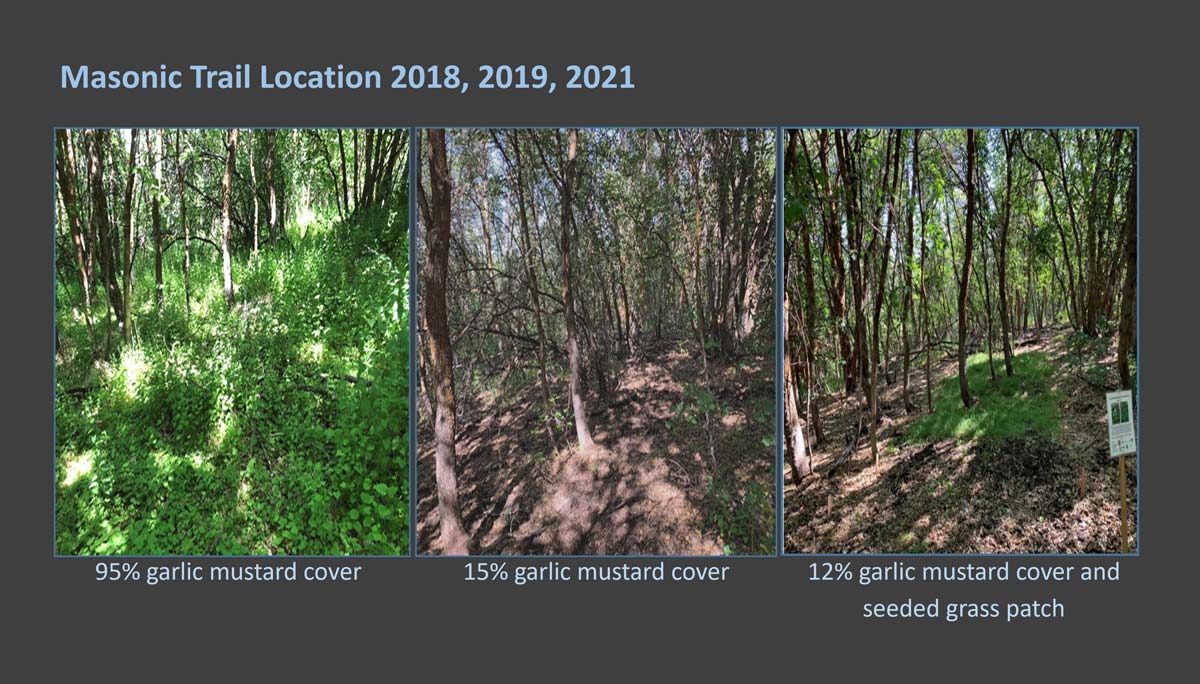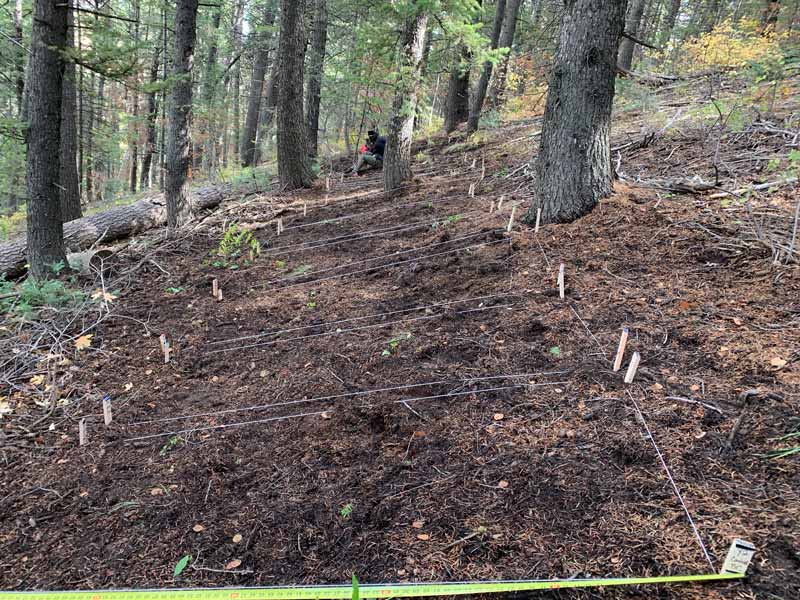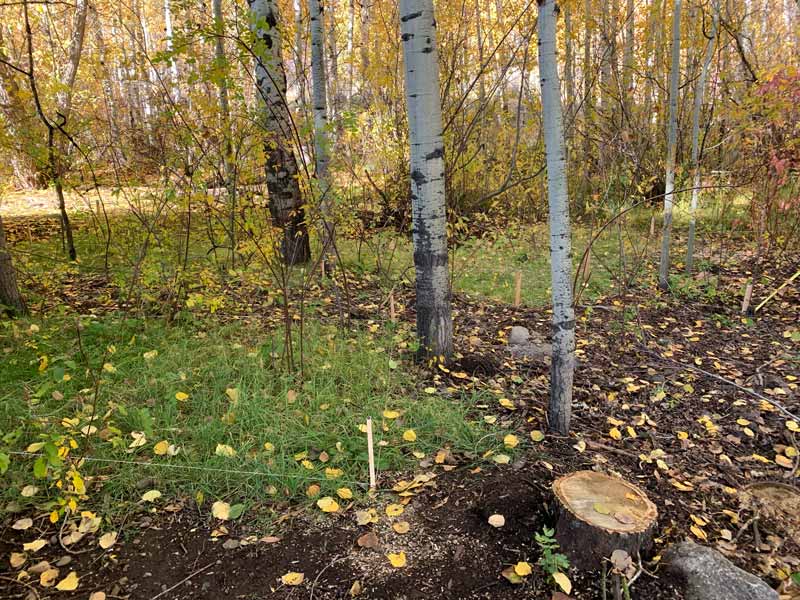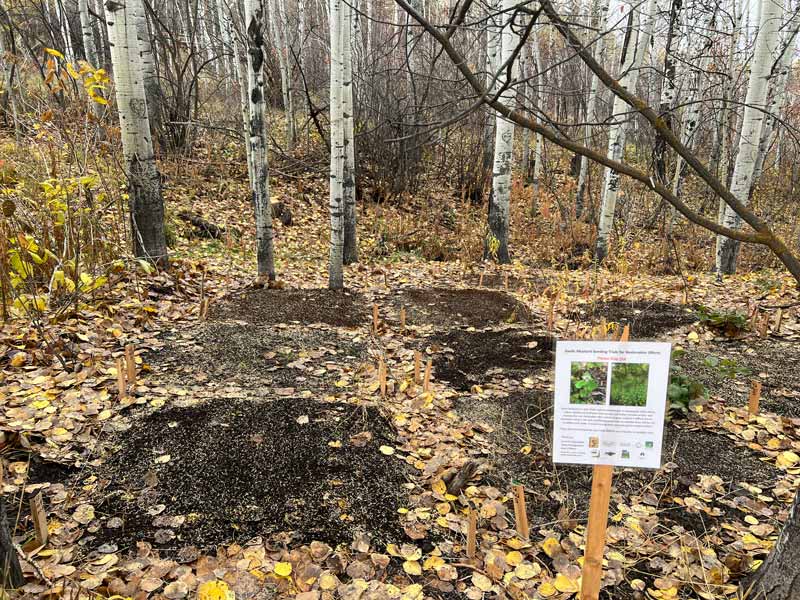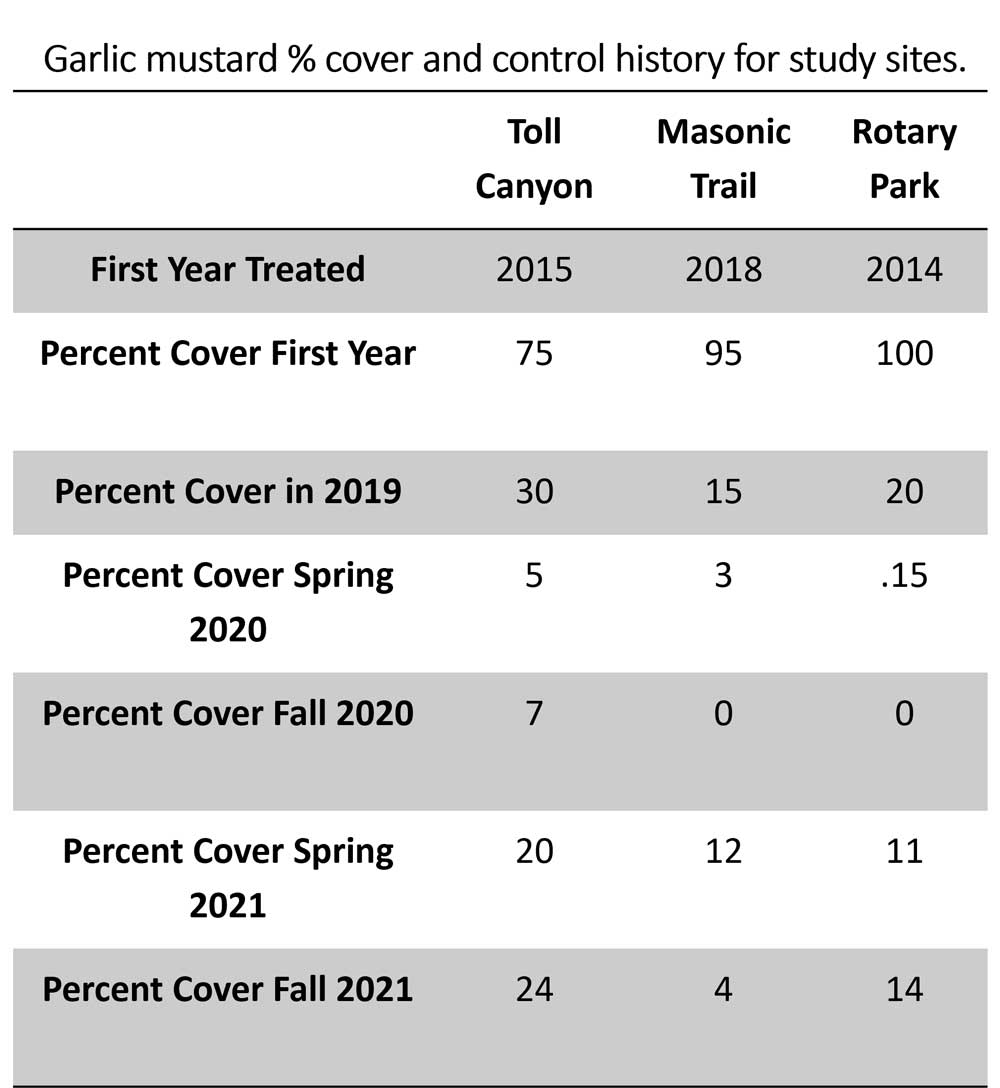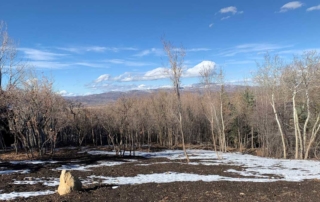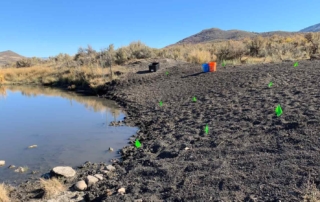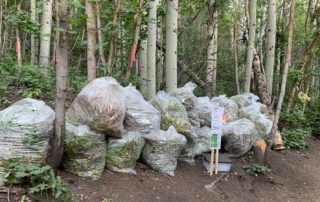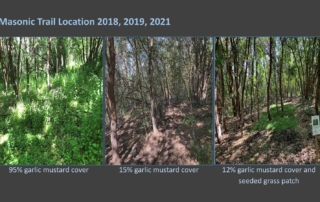Garlic Mustard Control Revegetation Trials
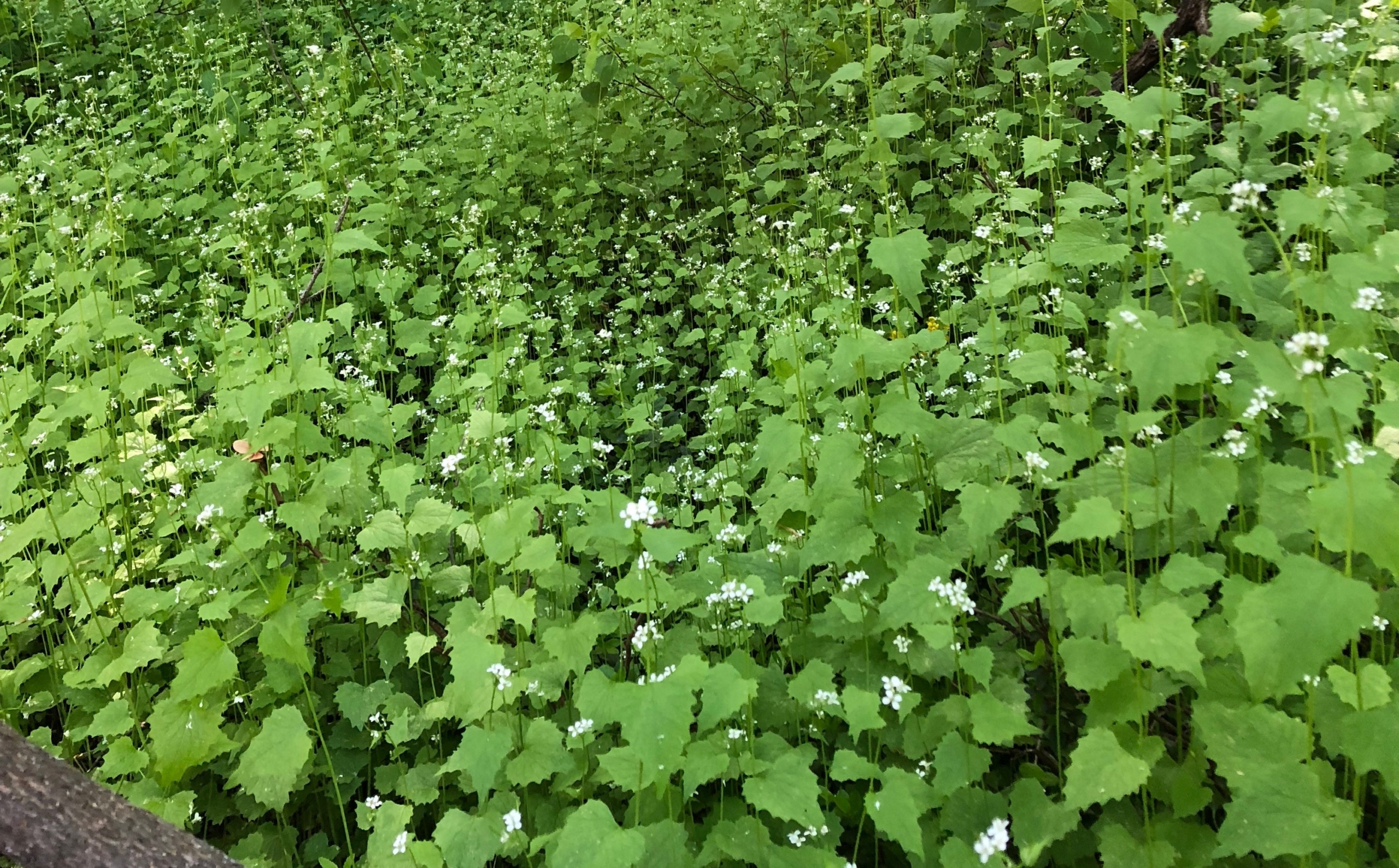
Garlic Mustard Control Revegetation Trials
The CWMA has been treating garlic mustard in Summit, Salt Lake, and Wasatch Counties as part of the Summit CWMA ISM Garlic Mustard Control Program for over ten years. With a method that combines hand thinning/weeding of flowering garlic mustard plants and follow up herbicide application to control garlic mustard rosettes, great progress has been made in reducing garlic mustard where treated. While this method shows promise in containing and controlling garlic mustard, the native vegetation is not recovering even once garlic mustard has been absent for three years.
In previous years, seeding of areas with reduced garlic mustard in sunny locations had shown success using slender wheat grass (Elymus trachycaulus) and mountain brome (Bromus marginatus). Unfortunately, these species were not successfully establishing post garlic mustard treatment under forest and shrub canopy. It was unclear if this was due to shading, lack of necessary site preparation, low seeding rates in a single seeding event or soil legacy effects of garlic mustard allelopathic actions.
Ecology Bridge was brought in with a partnership with the Utah Weed Supervisors Association to run revegetation trials to tease apart what was most limiting seed establishment. Revegetation test plots were established in three locations in the Park City and Snyderville Basin areas of Summit County, Utah. Three native grass seed mixes with soil amendments were applied to identify a method and species mix for establishing native plant cover and increasing resistance to reinvasion of garlic mustard. Each of the sites are within different forest types: a maple/oak woodland surrounded by sagebrush shrubland, an aspen stand and a conifer forest. Each forest is characterized by different levels of forest floor light, presence of and density of a native forest understory plant community and soil characteristics.
Soil amendments were applied late spring to early summer depending on timing of snowmelt and consisted of compost and biochar. Biochar was used because research suggests it may aid in binding non-native plant allelopathic chemicals, such as those produced by garlic mustard. The ability to bind these chemicals added to the ability of biochar to increase soil moisture holding capacity could increase the success of seeded species establishment. We additionally tested the value of adding compost to ensure proper nutrients were available to seedlings and compost because it can also hold greater moisture than native soils. Following soil amendments, three native grass mixes were hand broadcast and gently raked into the appropriate plots in both spring and fall of 2020.
The spring seeding did not yield good results at the conifer and maple/oak woodland locations. This is likely due to the limited ability to irrigate at these sites and potentially lower light availability under denser forest canopy or thicker duff layers. Grass germination and survival was high in spring/summer of 2021 at all locations, likely a result of fall seeding. Fall seeding takes advantage of soil moisture from snow melt to keep germinating seed moist during the more sensitive first three weeks of growth. These results suggested seed limitation as a potential primary cause of low native plant recovery following garlic mustard control. There did seem to be some added benefit from soil amendments, but to what degree was unclear. We had assumed that the soil was the primary cause of low native plant recovery and therefore did not include a soil amendment free (control) treatment. So, in fall of 2021, a new set of plots was established to include this missing treatment. In addition, early results indicated that blue wildrye had the most successful establishment as it was the only species to flower. To look at this further, we increased the percent of blue wild rye in two of our seed mixes.
In addition to the trials, funding allowed us to work with the Summit CWMA partners and residents to seed additional sites where garlic mustard has been significantly reduced. A total of approximately 72 acres were seeded by Summit CWMA partners with the seed mixes that have been tested here. An additional 1-3 acres were seeded by the 57 residents that picked up seed. In all, 73 sites were seeded.
We look forward to revisiting the revegetation plots in 2022 to determine which mixture of methods is most successful and cost effective. We are also hopeful that more of the grasses in the older plots will flower this coming season and allow us to identify the highest performing species mix more accurately.

